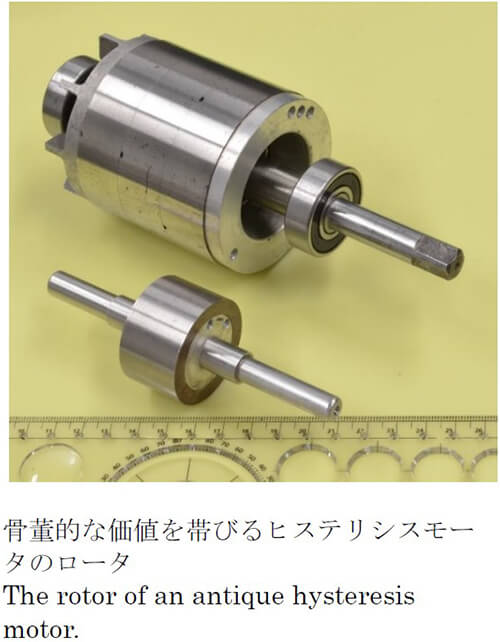Glossary of Motor Terms
Hysteresis motor
The hysteresis motor is a kind of rotating field type motor, it is also a type of synchronous motor. A
ring-shaped material, which can be permanently magnetized and has a low coercive force, is used for the rotor.
When the motor is switched on, it turns smoothly and eventually synchronizes with the rotating magnetic field.
That is to say, the rotational speed per second is equal to the frequency divided by the number of pole pairs of
the winding. For example, in an area using a 50 Hz power supply, a 4 pole winding hysteresis motor would rate
25/s. In one minute this is multiplied by 60 giving 1500 rpm.
This motor isn’t used very much at present for commercial purposes. However, historically it was meaningful for
IT because it was necessary to use a motor that could drive the magnetic recording tape at a constant speed.
Advances in permanent magnets and electronic elements have created an explosion in the use of brushless motors
that inherited this motor structure, and miniaturization has also advanced. The reluctance motor also has
similar characteristics, but when compared using a 3 phase Y connection at neutral point voltage, the hysteresis
motor is stable, whereas the third harmonic appears with the reluctance motor.


